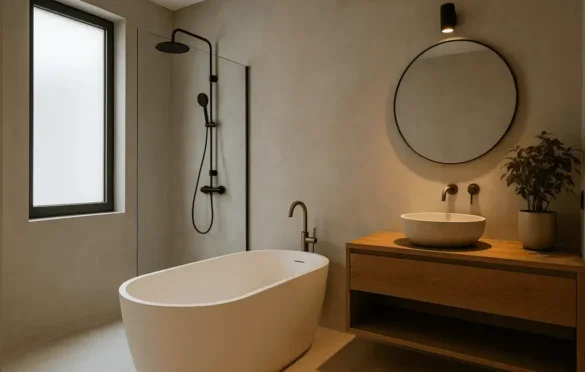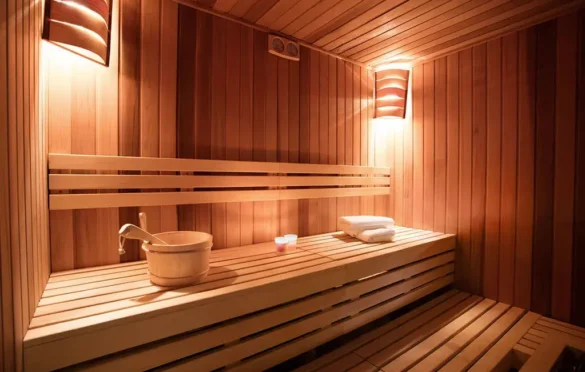Explore this post with:
Modern architecture continues to rediscover the power of natural materials. Among the most compelling examples are Shou Sugi Ban wood and ThermoWood cladding, two innovative timber treatments that combine aesthetic beauty with long-term performance. While one uses ancient fire to protect wood, the other relies on modern heat modification. Both embody a balance between tradition, design, and sustainability.
The Beauty of Controlled Fire: Shou Sugi Ban
Originating in Japan, Shou Sugi Ban also known as “Yakisugi” or “burnt Japanese wood” — involves charring the surface of the timber to create a natural carbon layer. This process seals the surface, making it highly resistant to weather, insects, and decay. The result is a visually striking cladding with rich textures, ranging from deep matte black to shimmering silver-grey as it weathers.
Beyond its distinctive look, Shou Sugi Ban offers longevity with minimal maintenance. The charred surface acts as a built-in barrier against moisture and UV radiation, eliminating the need for synthetic coatings. Architects often use it to create contrast against materials like glass, metal, and stone, giving façades a bold, sculptural quality that suits both minimalist and rustic designs.
Thermal Innovation: Thermo Pine and the Science Behind Thermowood
Thermo Pine represents another form of timber transformation. Through precise heat treatment typically between 180°C and 220°C, pine wood becomes more dimensionally stable, durable, and resistant to biological decay. This process, known as thermal modification, removes moisture and resins while reconfiguring the wood’s structure. The result is lighter, more stable material that performs exceptionally well in exterior cladding.
As part of the ThermoWood family, Thermo Pine shares the same benefits: improved stability, reduced warping, and a warm, golden-brown tone that can age gracefully to a soft silver if left untreated. Unlike pressure-treated timber, it contains no chemicals only heat and steam making it one of the most environmentally responsible materials available for façade design.
Sustainability Through Craftsmanship
Both techniques champion sustainability through longevity. Shou Sugi Ban reduces maintenance cycles, while Thermo Pine extends the natural life of softwood species without chemical additives. Each square metre of timber cladding stores carbon, supporting low-emission construction goals. When sourced from responsibly managed forests, both materials contribute to architecture that is as sustainable as it is beautiful.
Thermo Pine’s low energy footprint and recyclability make it ideal for eco-certified projects. Shou Sugi Ban, meanwhile, requires no industrial coatings and can be locally produced from species such as larch, spruce, or cedar, all renewable resources. In a market shifting towards carbon-conscious materials, both processes stand out as authentic and sustainable choices.
Performance and Design Flexibility
Shou Sugi Ban excels in creating high-impact façades. Its deep char layer enhances weather resistance, and its bold visual character makes it suitable for statement architecture from luxury homes to boutique commercial buildings. Designers can vary the burn depth for different textures and tones, producing subtle gradients or dramatic contrasts.
Thermo Pine, on the other hand, offers uniformity and precision. Its stability makes it ideal for linear, contemporary façades that demand tight joint lines and long board spans. When installed with ventilated battens, ThermoWood cladding performs reliably for decades even in challenging UK weather conditions.
Installation and Maintenance
Both cladding types benefit from professional installation on ventilated frameworks, typically with vertical battens spaced at 400 mm centres. Stainless steel fixings and sealed cut ends are essential to ensure durability. Shou Sugi Ban boards can be left untreated or coated with natural oils to enhance tone and texture. Thermo Pine requires only minimal upkeep a periodic clean or light oiling, depending on exposure and design preference.
Choosing the Right Finish for Your Project
For designers and homeowners seeking contrast and drama, Shou Sugi Ban offers unmatched visual depth. Its charred texture captures light and shadow differently throughout the day, turning any façade into a living surface. For projects that prioritise clean lines, sustainability, and consistency, Thermo Pine delivers Scandinavian precision with a natural warmth that complements both modern and traditional settings.
Many contemporary architects now combine both materials using Shou Sugi Ban for feature walls and Thermo Pine for the main façade achieving harmony between dark and light, tradition and technology.
Conclusion
The evolution of timber treatment has created two remarkable paths to durability: fire and heat. Shou Sugi Ban wood expresses the artistry of controlled burning, while Thermo Wood cladding (Thermo Pine) reflects scientific precision and sustainability. Both redefine what timber can achieve in modern architecture merging nature, craft, and performance in a way few materials can match.
Available through Timber Cladding Specialists, these innovative timber solutions offer architects and builders the tools to design façades that are as sustainable as they are timeless.
In Case You Missed It!
About the Author: archistyladmin
At Architecturesstyle, we’re passionate about smart design, beautiful spaces, and practical tips that help you bring great architecture into everyday life. Whether it's modern home ideas, iconic buildings, or expert advice, our team brings fresh and useful content to readers who love architecture as much as we do.




